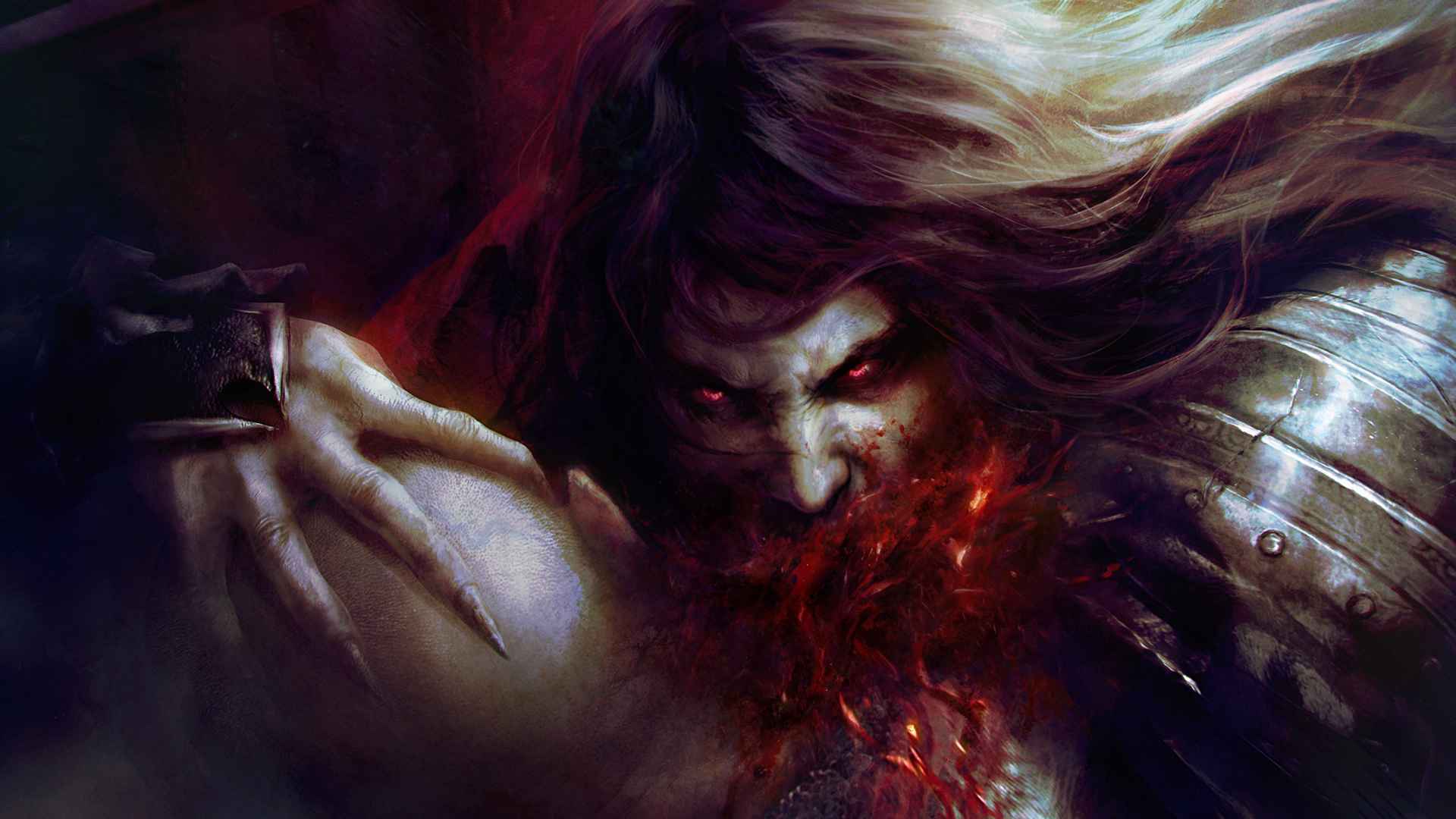12DOVE Verdict
Pros
- +
Powerfully affecting soundtrack
- +
Beautiful medieval sections
- +
Sometimes evokes the atmosphere of the first game
Cons
- -
Combat lacks finesse
- -
Too many poor diversions
- -
Loss of scale and spectacle
Why you can trust 12DOVE
Gabriel Belmont--aka Dracula--is a deeply conflicted character, pulled in multiple directions by the dark and light influences of Castlevania: Lords of Shadows 2’s story. As such, he’s an unfortunate but entirely apt metaphor for the game’s overall problems. At heart, Gabriel knows the right path to take, but the myriad eldritch temptations around him cause a whole mess of trouble.
Castlevania: Lords of Shadow 2 is a sequel that simply tries to do too much. It fills out its lengthy running time not with deeper explorations of the surgically precise combat, platforming, and cohesive world-building of its predecessor, but with multiple misguided, jarring new elements that all-too often fail to satisfy in their own right. Worse, they make for a diluted, deeply disjointed overall game experience.
It’s frustrating, because the seeds of a great sequel are buried in CLoS2, struggling to emerge through the mire. The game’s greatest successes are its exquisite, atmospheric environments, the majority of which exist within the medieval sections of the game. Housed within the castle in the centre of CLoS2’s modern city, these areas provide the game’s most consistently satisfying experiences. The structure of this location is intriguing, as linear 'levels' are connected via non-linear game hub (think Batman: Arkham Asylum rather than Arkham City). Here, Dracula's past and present clash as supernatural forces make his memories tangible. For all the dream-logic underpinning it, the castle feels like a real, coherent setting, its cavernous interiors and sprawling vistas providing the game’s most accomplished platforming and most satisfying battle arenas. The whole place just holds together beautifully. But unfortunately, holding together beautifully is not, on the whole, what this game does well.

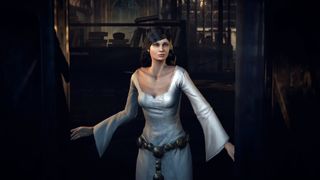
Developer Mercury Steam has been unambiguous about this being the end of the Lords of Shadow series, promising a resounding conclusion to Gabriel's story. A ballsy and respectable move in this era of multitudinous sequels and spiraling franchises. Alas, CLoS2 doesn't deliver the satisfying narrative closure that long-term fans might hope for. Its plot is as muddled as its gameplay, full of seemingly important but ultimately disposable characters and plot-points, with an inconclusive ending that withers when it should resolve.
After setting hopes high with a barnstorming, cinematic opening sequence interspersing open, flowing combat with the scaling of a colossal medieval mech, CLoS2 systematically fails to emulate that scale or spectacle at any point following. Instead, ironically, the semi-open city serves only to make Castlevania’s world feel small, cramped, and limited in scope. Really a series of interconnected, linear paths, it’s far too concerned with pokey interiors, low-level street settings, and overly contained climbing sections to ever become truly evocative or impressive. The dingy, grimily unappealing visual design is compounded by inconsistent, often scrappy graphical execution and a desperately empty vibe. It all conspires to make the modern-day areas much less fun or inspiring than they could have been.
Aesthetic and tone aside, the constrained, small-scale design also has a detrimental effect on the series’ previously stellar combat. The melee fighting at the core of CLoS2 initially seems to pick up where the first game left off, delivering fast, challenging, evasive combat built on strong principles of spatial control and enemy manipulation. Eschewing the full attack-cancelling malleability of a Bayonetta or a DmC, CLoS provides a different kind of satisfaction, in which largely uninterruptible enemy attacks must be smartly avoided or countered as you progressively manipulate the shape of the fight. With every enemy, it’s all about chipping down their health until you can open up the right opportunity to unleash the appropriate response. If the more fluid fighting of the aforementioned games is akin to picking a lock, this is more like methodically selecting the right keys from a large and varied bunch. When it all comes together, it’s as exhilarating as it cerebrally satisfying. But it doesn’t always come together.
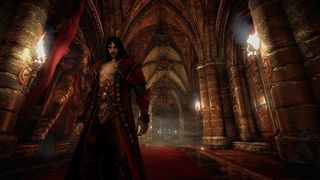
In more practical terms, the city environments are frequently ineffective in supporting the wide, rangey combat model, a problem compounded by the new 3D camera. While this new addition lends an immense tangibility to Castlevania’s more picturesque environments, its viewpoint is often too close to the action during combat, creating awkward obscuration where there needs to be clarity and transparency. Worse, many of the new enemies add to the problem, particularly those with ranged attacks. It’s one thing to be limited to a half-view of a fast-paced, 3D melee fight, but with multiple machine gun-toting goblins and armed troopers thrown into the mix, it’s a recipe for some infuriating situations that no amount of free camera control will get you out of. Enemy tell-animations are also highly variable, sometimes giving enough notice to concoct a tactical response, sometimes barely seeming present at all. And that’s when they actually happen on-screen. The most calamitous element though, is that the game often undermines its key combat tactic.
The ultra-powerful parry move, instigated via a perfectly timed block, is clearly intended to be central to the whole fighting model. In the first game, it works flawlessly, adding immense empowerment through a well-implemented risk-and reward mechanic. CLoS2 puts great emphasis upon it again, but the failings in environmental design, camera, enemy behaviour, and the gross overuse of unblockable enemy attacks frequently makes it unviable. It’s telling that a new shop system provides a plethora of easily affordable health and magic-boosting items not present or required in the first game, almost as if providing a safety net for the sequel’s lack of finesse. Sad to say, but brute-forcing through with buff items is now an acceptable and all-too-tempting tactic.
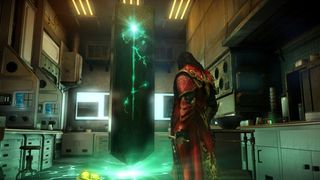
In addition to combat annoyances, incongruous stealth sections both roadblock the game-flow and fail to be interesting. Utilising Dracula’s ability to throw diversionary bat-swarms and transform into a rat, these sections initially seem like a smart change of pace, but ultimately never evolve beyond simple, rigid, self-contained trial-and-error puzzle rooms that fail to gel with the world as a whole. They also provide the basis for what is easily the game’s lowest point: a screamingly annoying, and narratively illogical, boss encounter. One that forces you into CLoS2’s awkward stealth system. And insta-kills you if you make a mistake.
Elsewhere, Dracula’s new ability to throw ice and fire projectiles with the magic stock that powers his Void and Chaos weapons (which steal enemy health and break armour, respectively) show initial promise during puzzling sections, but like the stealth, their limited implementation eventually disappoints, largely reduced to basic ‘throw projectile to remove obstacle’ tasks. These powers do become slightly more relevant in boss fights. But here, again, over-use of unblockable hits takes its toll on the action. Additionally, some bosses and larger enemies actively require ranged combat, which would be fine if it wasn’t for inconsistencies in feedback often masking that fact for far too long.
It’s all very frustrating, because CLoS2’s overall approach to more physical environmental puzzles, while a mixed bag, can throw up some interesting stuff. A clever set-piece, requiring Dracula to correctly assemble theatrical stage furniture in order to retell the heartbreaking history of an NPC, is a beautiful sequence, both visually and narratively. It really emphasises what this game could have been with more care and focus.

CLoS2 is a resoundingly muddled game, disjointed and unclear of vision. It feels like a collection of disparate, part-formed game elements in search of coherent structure, pace, and polish. It’s perhaps an egregious extension of my opening metaphor to point out that in combat, Dracula fuels his magic stock by struggling to fill a Focus meter... but in light of how badly CLoS2’s lack of focus fuels its difficulties in recapturing the series’ own magic, it feels entirely fitting to do so.
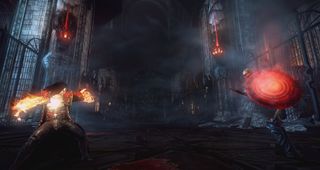
Lacking the focus, clarity and coherence of its precursor, Castlevania: Lords of Shadow 2 fails to satisfy as a sequel or as a game in its own right, delivering muddled game design and little narrative resolution.
This game was reviewed on PS3.
More info
| Genre | Action |
| Description | Drac is back and madder than ever. The sequel to MercurySteam and Kojima Productions' reboot of the classic series gets the Belmont gang back together for one more go at that most ancient of evils. |
| Franchise name | Castlevania |
| UK franchise name | Castlevania |
| Platform | "Xbox 360","PS3" |
| US censor rating | "Mature","Mature" |
| UK censor rating | "","" |
| Alternative names | "Castlevania 2" |
| Release date | 1 January 1970 (US), 1 January 1970 (UK) |
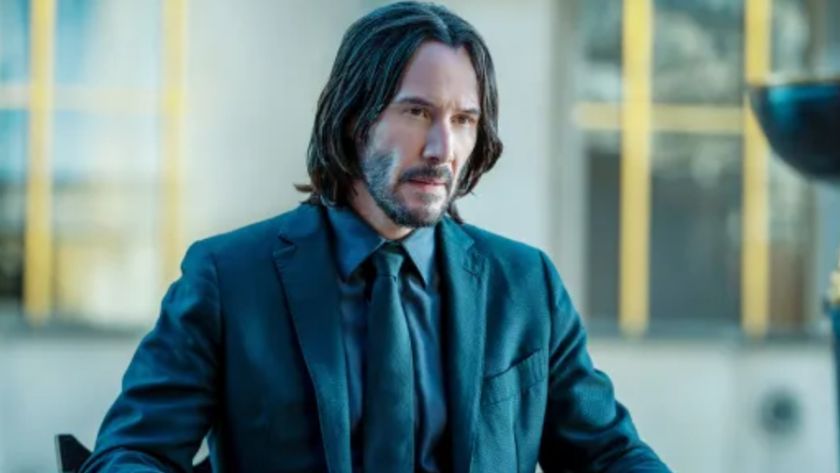
Keanu Reeves is returning for John Wick 5 as the franchise expands with an anime prequel series and a Caine spin-off movie
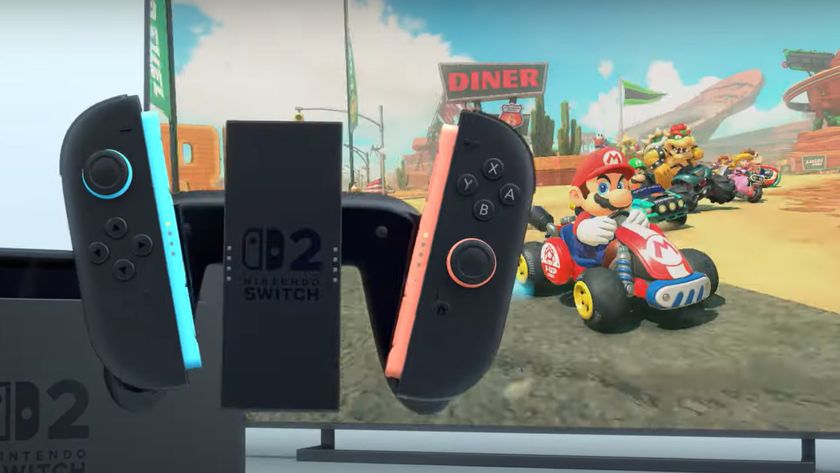
Ex Nintendo PR managers say the Switch 2 generation is likely to see the retirement of "several of the major developers at Nintendo who we have known for 40 something years"

Helldivers 2 CEO says industry layoffs have seen "very little accountability" from executives who "let go of one third of the company because you made stupid decisions"
